Last Tuesday 9th March, in Suzhou, was held “The Sustainable Factory” seminar & panel discussion by the German Chamber of Commerce in China, at GAMI – Global Advanced Manufacturing Institute. The concern around sustainability is growing among governments, corporations and civil society, and it applies to factories.
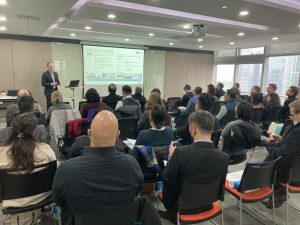 The event was held at GAMI, Suzhou
The event was held at GAMI, Suzhou
Manuel Ramos, GM of TERAO Asia, introduced trends for factories to get more into sustainability such as stricter regulations and verifications by authorities, higher operation cost, CSR guidelines pressure or high turnover of qualified workers. Therefore, as he stated, pressure is increasing on industrial players.
“More and more factories will need to comply with local regulations or corporate guidelines for a more sustainable and comfortable factory.”
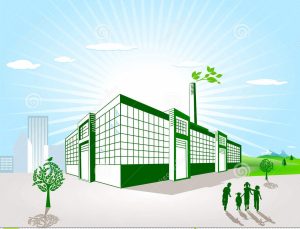
During this event, the different speakers shared different strategies how to make it.
Tommaso Colli from D’Andrea & Partners, reminded different laws in China around environment protection, especially the “Environmental Protection Tax Law of the People’s Republic of China”《中华人民共和国环境保护税法》, giving a framework on tax to be paid when factories discharge pollutants in air, water or solid waste, noise.
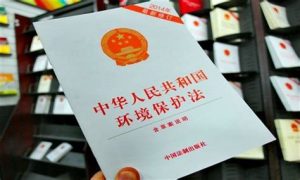
Factories can use less energy, less water and emit less carbon emissions: our Business Development Manager Gaspard Lemoine-Scelles introduced TERAO different case studies of energy optimization in factories followed by introduction of carbon footprint methodology, for existing factories.
“Especially for existing factories, the potential for energy savings can be huge, and it will help to reduce factories carbon footprint along this process. Each factory has its specificities: energy audits and carbon footprint assessment can help towards identifying each factory potential improvements and shaping an action plan.”
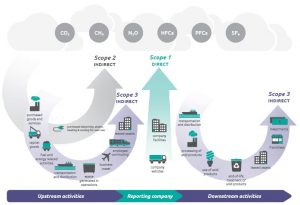
Scope 1, 2, 3 of carbon footprint assessment
Our Operation Manager at TERAO Maxime Besseas focused on energy efficiency and water efficiency for new constructions, as in China, new factories are still booming:
“Often, factories consumption could be lowered easily by minimum 30%, through design adjustment. For instance, by adjusting the need of HVAC systems to the right usage and the right sizing, high-efficiency technologies, robust technologies such as VFD. When adjustments are done during design stage, it will help save money compared to corrections happening during post-construction.”

“Green Building certification such as LEED, BREEAM, GBL can help to drive the sustainability target of the client in a clear manner with guidance. You can find the same to enhance well-being of employees, through the WELL certification.”
After reducing energy usage, carbon footprint can be decreased even more by installing Solar PV panels on the site or roof of the asset, and implementing PPA (Power Purchase Agreement), as suggested by Jochen Geschke from Opitz Real Estate Consulting, if local regulations and measures can be favorable.
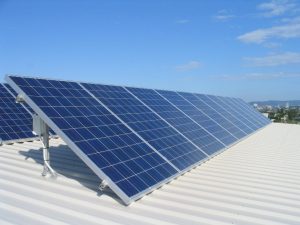
Rethinking factory structure and interior design is of the upmost importance to make it more comfortable and sustainable, as Romain Poirier from FrenchHouse suggests. Solutions such as bicycle storage or facilities, better choice of material, lighting design etc. will helped to improve the comfort, safety of the employees as well as sustainable features of the factory.
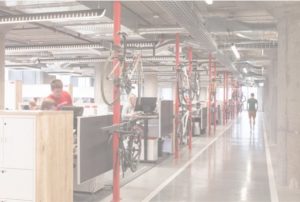
Regarding noise pollution, Jean-Philippe from Delhom Acoustique shared how this issue could be tackled easily and smartly, through acoustic studies and solutions, during Design (less costly) or also for existing factories. It will help to reduce environmental impact of the factory on the neighborhood, as well as improve comfort of the employees.
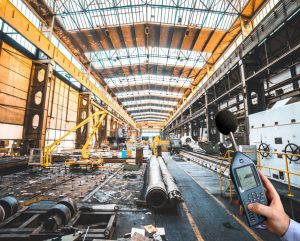
If you need any information about sustainable solutions in the industry and how to make your factory more healthy and sustainable, please do not hesitate to contact us at glemsce@teraochina.cn. TERAO would be happy to help you optimize your asset through the different mentioned aspects.
Explore more:
· German Chamber in China – link of the past event
· Reference projects from TERAO
· Our clients recommend us – Erlab factory case study



![[Case Study]Boosting Productivity and Safety Through Optimized Factory Comfort](https://teraoasia.com/wp-content/uploads/2025/09/Cover-photo-150x150.png)
Leave A Comment